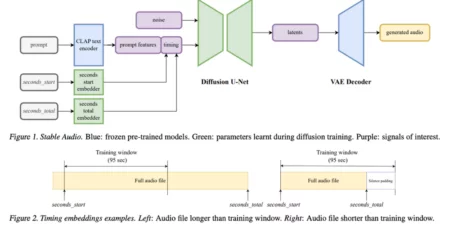A compression is a form of sound waves where the amplitude (volume) of the wave is increased. This can be done by using a compressor to increase the output of the signal or by manually increasing the volume on the recording device. Compression can make a sound louder or more consistent in levels. It can result in a “pumping” or “breathing” sound when used excessively.
It is often used in recording and live sound reinforcement to even out the levels of sounds, especially percussive sounds like drums. By compressing the signal, the waveform’s peaks are attenuated, reducing the signal’s overall dynamic range. It can help make a recording or live performance sound more consistent, as well as make it easier to mix. In this article, we will explore what audio compression is, its algorithms, the audio compression setting chart, and much more about this topic.
What is Audio Compression?
Audio compression is a process that reduces the size of an audio file while retaining the original quality of the sound. The most common type of audio compression is MP3, which uses a “lossy” compression algorithm to reduce the size of the file. It can do it without sacrificing too much quality. There are also “lossless” compression algorithms, which provide better sound quality but result in larger file sizes.

What is an Audio Compression Algorithm?
In computing, an audio compression algorithm is a type of algorithm used to encode digital audio data using fewer bits. The main goal of audio compression is to reduce the amount of data required to represent a given signal while retaining all the information in the original signal.
Many different audio compression algorithms are available, each with advantages and disadvantages. Some popular audio compression algorithms include MP3, AAC, and Vorbis.
Audio Compressor Settings Chart
An audio compressor settings chart is a tool that can help you adjust the settings on your audio compressor. Following the chart ensures that your compressor is set up correctly to achieve the desired results.
The input level is the first thing to consider when using an audio compressor settings chart. This refers to the level of the signal that is being sent into the compressor. The higher the input level, the more compression will be applied to the signal.
Next, you’ll need to consider the attack time. This setting determines how quickly the compressor kicks in and starts compressing the signal. A longer attack time will result in a smoother sound, while a shorter attack time will produce a more aggressive sound.
The release time is also an important setting to consider. This determines how long the compressor takes to release the compressed signal after the input level has dropped. A longer release time will result in a smoother sound, while a shorter release time will produce a more abrupt sound.
Finally, you’ll need to adjust the threshold level. This setting controls how much compression is applied to the signal. The higher the threshold level, the more compression will be applied.
By following an audio compressor settings chart, you can easily adjust the settings on your audio compressor to achieve the desired results. Learning about these settings ensures that your compressor is set up correctly to provide you with the best possible sound quality.
Audio Compression Ratio
It’s essential to know about audio compression ratios because they can significantly impact the quality of your audio. A higher compression ratio means more data is removed from the original file, leading to lower audio quality. However, a lower compression ratio will result in larger files that take up more space.
Audio Compressor Hardware
Audio compressors hardware are devices that reduce the dynamic range of an audio signal. This means that the loudest parts of the signal are quieter, and the quietest parts are louder. This can be useful for evening out the recording levels or preventing clipping (a form of distortion) when amplifying a signal.
Compressors usually have two controls: threshold and ratio. The threshold is the level at which compression will start to occur. The ratio is the amount of compression applied once the threshold has been reached. For example, a ratio of 4:1 means that for every 4 dB above the threshold, only 1 dB will be allowed through.
Definition of Music Compressor
Compressor music definition is that it is a type of electronic music that is produced by compressing audio signals. This compression can be done using various methods, such as digital signal processing (DSP) or analog circuits. The compression results can make the music sound “punchier” or “louder.” In some cases, compressed music can also have higher clarity and definition. Compressor music is often used in dance clubs and other venues where loud, clear music is desired. It can also be found in many popular songs and movies
What is Knee in Compression?
What a knee in compression is a trendy question. So, the answer is that the process by which the compressor moves from a non-compressed condition to a compressed state is referred to as the knee in compression. On the majority of compressors, you have the option of selecting either a “soft” or a “hard” knee. While some compressors only offer one knee type, others offer a choice between two different knee positions.
What is Music Compression?
Music compression is a process of reducing the size of digital audio files while retaining the original quality of the music. The primary purpose of compressing music files is to make them more manageable in terms of storage and transfer. Reducing the file size requires less space to store the music files, which can be transferred faster over the internet or other networks.

Different music compression algorithms are available, each providing different levels of compression. Some familiar music compression formats include MP3, AAC, WMA, and FLAC. Music files can also be compressed using lossless compression methods to retain the original audio quality.
How To Choose a Music Compression Format?
When choosing a music compression format, it is essential to consider file size and quality trade-offs. Higher compression ratios generally result in lower audio quality, while lower compression ratios preserve more of the original sound quality. It is also essential to consider the compatibility of the compressed file format with the devices and software used to play the music.
What Does a Compressor Do in Music?
A compressor is a device that reduces an audio signal’s dynamic range. This means that it reduces the difference between the loudest and quietest parts of the signal. Compressors are commonly used in recording and live sound situations to check individual instruments’ levels or voices and ensure that the overall level remains consistent.
Compressors can achieve several different sonic effects, depending on how they are set up and used. For example, a fast attack time can create a “punchy” sound, while a slower attack can smooth out transients and even levels over time. A high ratio will result in a more dramatic level reduction, while a lower ratio will have a more subtle effect. The release time determines how long it takes for the compressor to stop reducing the level once the signal falls below the threshold.
In general, compressors make signals sound louder, more consistent, and “fuller” by evening out the levels over time. They can also be used to create special effects, depending on how they are set up and used. So, I hope you will get the answer to what does a compressor do in music?
How To Use Compression in Mixing?
Compression can be a powerful tool in mixing, but it’s essential to know how to use compression mixing. Here are some tips:
- Start with a low ratio and increase until you hear the desired effect.
- Experiment with different attack and release times to find what sounds best.
- Ensure the threshold is set correctly so that only the desired signal is compressed.
- Listen to mono and stereo to hear how the compression affects the sound.
- Use compression sparingly, as too much can make the mix sound muddy and cluttered.
By following these tips, you can learn how to use compression in mixing to achieve the desired results.
How To Buy the Best Audio Compressor? Buying Guide
If you’re looking for the best audio compressor, there are a few things you’ll want to keep in mind.
First, consider the type of compressor you need. There are two main types of compressors: hardware and software. Hardware compressors are physical devices that you connect to your computer or recording studio. Software compressors are programs that you can download and use on your computer.
Second, think about the features you need. Some compressors have more features than others. For example, some compressors allow you to control the amount of compression, while others have preset settings.
Third, consider the price. Compressors range in price from a few hundred dollars to several thousand dollars. Choose the best compressor for your budget and needs.
Fourth, read reviews of compressors. You can find reviews online from other users. This will help you see what others think about the compressor before you buy it.
Finally, make sure you get a warranty on the compressor. This will protect you if the compressor breaks down or doesn’t work correctly. Compressors are an essential part of any audio setup. By following these tips, you can find the best audio compressor for your needs.





